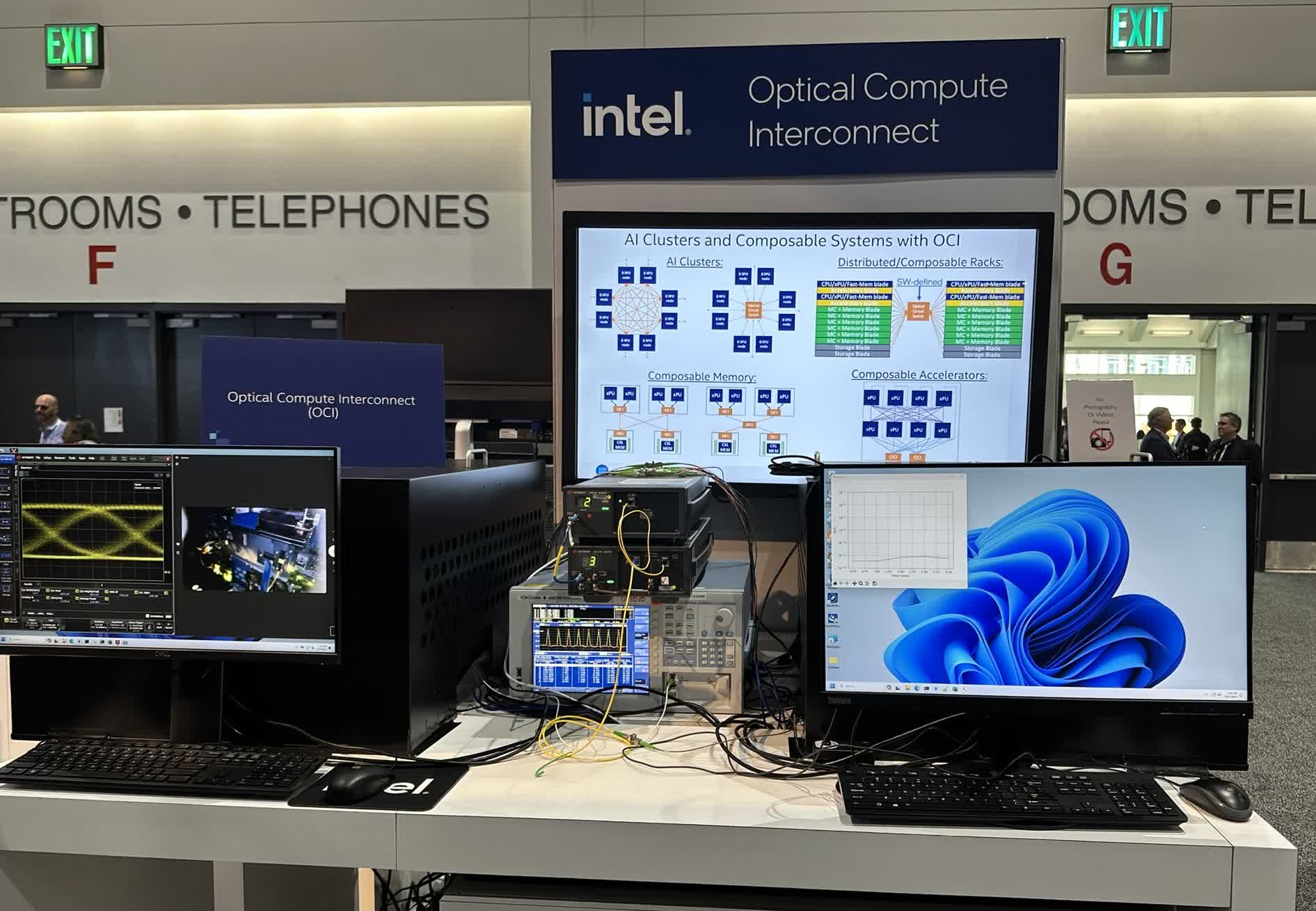The big picture: Intel has developed a fully integrated optical compute interconnect (OCI) chiplet, which it compares to transitioning from horse-drawn carriages to cars and trucks in terms of data transmission. The OCI addresses a gap in optical input/output solutions, where some don’t deliver enough reach while others have the reach but at too high a power cost.
At the Optical Fiber Communication Conference 2024, Intel demonstrated what it calls a revolutionary milestone in integrated photonics technology for high-speed data transmission: a fully integrated optical compute interconnect (OCI) chiplet co-packaged with an Intel CPU and running live data. It is designed to enable co-packaged optical input/output (I/O) in emerging AI infrastructure for data centers and high-performance computing applications.
Its entrance into the market coincides with the explosion of AI applications and the tremendous need for bandwidth amid the current less-than-optimal sources of compute fabric, the company says. Compute fabric can use electrical I/O like copper interconnects, but those have short reaches of about one meter or less. Conversely, pluggable optical transceiver modules used in data centers and early AI clusters can increase reach but at a cost and power level that are not sustainable with the scaling requirements of AI workloads.
What the industry needs, Intel maintains, is compute fabric that provides higher bandwidth across greater distances while using less power. This is where OCI comes in.
It allows users to integrate co-packaged silicon photonics interconnect solutions into next-generation compute systems. “Our OCI chiplet boosts bandwidth, reduces power consumption, and increases reach, enabling ML workload acceleration that promises to revolutionize high-performance AI infrastructure,” said Thomas Liljeberg, senior director of product management and strategy in the Integrated Photonics Solutions Group.
The OCI chiplet leverages Intel’s silicon photonics technology and integrates a silicon photonics integrated circuit (PIC), incorporating on-chip lasers and optical amplifiers, with an electrical IC. The OCI chiplet demonstrated at OFC was co-packaged with an Intel CPU but can also be integrated into next-generation CPUs, GPUs, IPUs, and other system-on-chips (SoCs).

The demo included a transmitter (Tx) and receiver (Rx) connection between two CPU platforms over a single-mode fiber (SMF) patch cord. The CPUs generated and measured the optical Bit Error Rate (BER), and the demo showcased the Tx optical spectrum with eight wavelengths spaced at 200 gigahertz (GHz) on a single fiber, along with a 32 Gbps Tx eye diagram illustrating strong signal quality.
The OCI is currently a prototype but supports up to 4 terabits per second (Tbps) of bidirectional data transfer over distances of up to 100 meters. It is compatible with PCIe 5.0, facilitating integration into existing PCIe-compatible infrastructure.
Intel also highlighted significant power savings, noting consumption of only 5 pico-joules (pJ) per bit compared to approximately 15 pJ/bit for pluggable optical transceiver modules.



